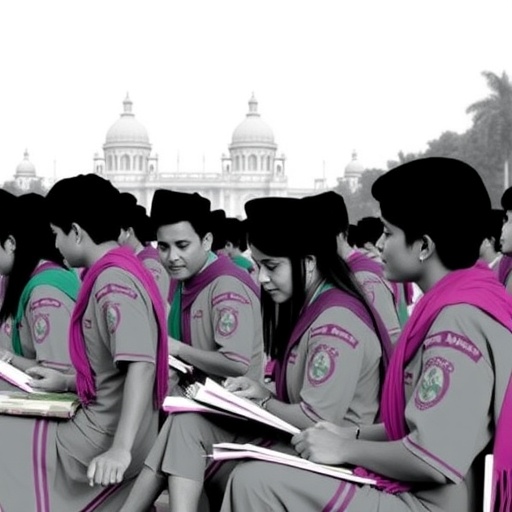The landscape of higher education access in India presents a complex interplay of socio-economic and spatial inequalities. In a recent study published by Gopinath, Kumar, and Banerjee in Discov Sustain, researchers delve deep into this pressing issue, outlining how disparities rooted in socio-economic backgrounds and geographical locations significantly influence educational opportunities among India’s youth. The researchers stress that while the nation’s higher education system has expanded over the years, access remains uneven, particularly for marginalized communities.
At the heart of the study is the examination of socio-economic factors that dictate educational access. These factors include income levels, family education history, and social status, all of which converge to create a barrier for many aspiring students. The research highlights how families with lower income levels often cannot afford the costs associated with higher education, including tuition, books, and living expenses. Consequently, a significant segment of the population remains underrepresented in colleges and universities, perpetuating cycles of poverty and limiting socio-economic mobility.
The geographical aspect of educational disparity also features prominently in the study. The research uncovers how students in rural areas are often disadvantaged compared to their urban counterparts. Access to high-quality institutions, mentorship, and supportive educational infrastructure tends to be concentrated in urban settings. In contrast, rural students often face a lack of opportunities, which compounds their already challenging socio-economic situations. This calls for urgent reforms and targeted initiatives that can bridge the urban-rural divide in higher education access.
Furthermore, the researchers emphasize the importance of policy changes aimed at improving educational access for marginalized groups. By providing better support systems that address both socio-economic and spatial inequalities, policymakers can foster a more inclusive higher education system. The study presents compelling evidence for the need for resource allocation that prioritizes underprivileged regions, ensuring that every student, regardless of their background, has the opportunity to pursue higher education.
In terms of recommendations, the research advocates for increased investment in educational infrastructure, especially in rural areas. This includes building more colleges and universities, improving transportation links, and providing financial aid to students from economically weaker sections of society. Such initiatives would not only boost accessibility but also enhance the overall quality of education, thus preparing a diverse student body for the future workforce.
Moreover, the involvement of local communities in educational planning is crucial. The research indicates that engaging parents, educators, and local leaders in the decision-making process could lead to more tailored solutions that cater to the unique needs of different regions. This community-driven approach can foster a sense of ownership and accountability, ultimately yielding better educational outcomes.
The study also highlights the significance of technology in bridging educational gaps. With the expansion of the internet and digital learning platforms, there is an unprecedented opportunity to reach students in remote areas. By harnessing technology, educational institutions can provide remote learning options, resources, and networking opportunities, thereby leveling the playing field for students regardless of their geographical limitations.
In conclusion, Gopinath, Kumar, and Banerjee’s research brings to light the critical issue of socio-economic and spatial inequalities in higher education access in India. Through a comprehensive analysis and actionable recommendations, the study serves as a clarion call for policymakers, educators, and stakeholders to take meaningful steps towards creating a more equitable and inclusive higher education landscape. As India continues to evolve, ensuring that all students have access to quality education should be a priority, as it is not just a matter of individual opportunity but a catalyst for the nation’s economic and social advancement.
Addressing the systemic inequalities in education is not merely a theoretical debate; it is a practical necessity that requires immediate attention. The study is a pivotal contribution to ongoing discussions about education reform, equity, and social justice within the Indian context. By positioning educational access as a fundamental right, India can take significant strides towards an inclusive society where every student has the chance to thrive, thereby fostering a more equitable future for generations to come.
Subject of Research: Socio-economic and spatial inequalities in higher education access in India
Article Title: Socio-economic and spatial inequalities in higher education access in India
Article References:
Gopinath, P., Kumar, R. & Banerjee, S. Socio-economic and spatial inequalities in higher education access in India. Discov Sustain 6, 1253 (2025). https://doi.org/10.1007/s43621-025-01778-6
Image Credits: AI Generated
DOI: https://doi.org/10.1007/s43621-025-01778-6
Keywords: socio-economic factors, spatial inequalities, higher education access, rural education, educational policy, equity in education, technology in education, education reform, inclusive education.




